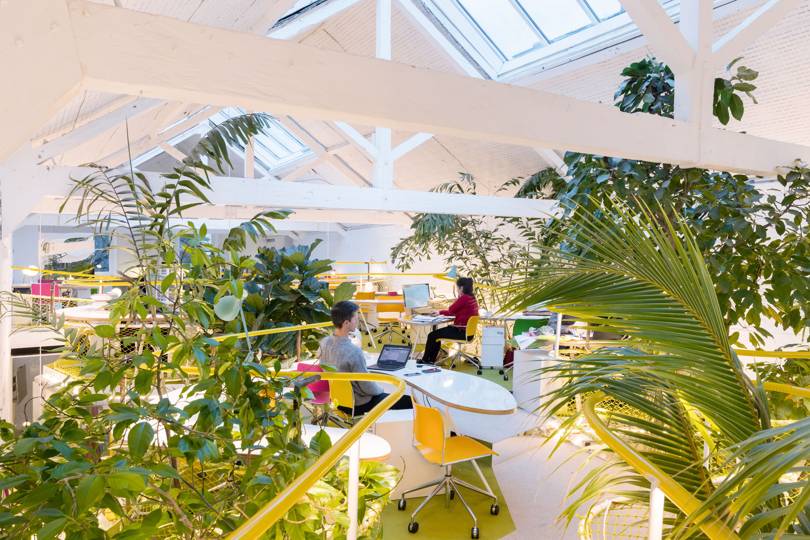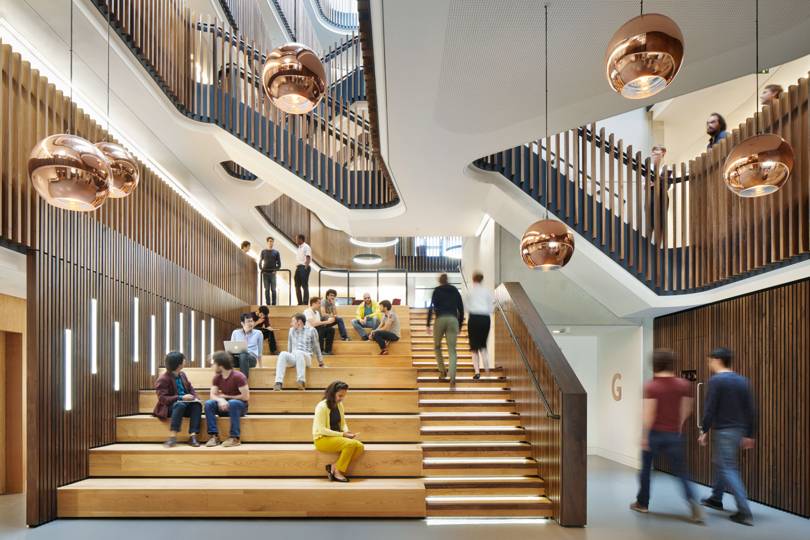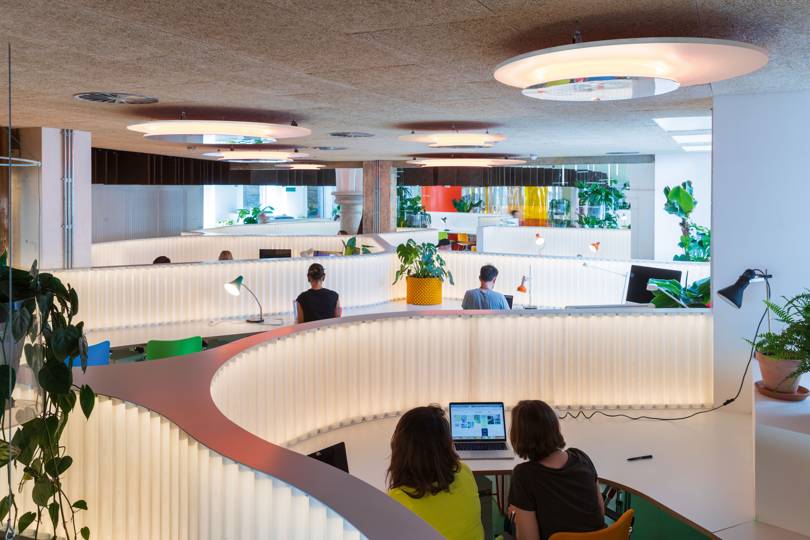How companies should be redesigning offices for a post-pandemic world

Workplaces are being redesigned with coronavirus in mind, and the walls are coming back up
The post-Covid office will be the opposite of open and free-flowing. It will offer isolation (splendid or otherwise) and, in a sharp reversal of prevailing trends, assigned spaces. “The whole office industry is kind of going into reverse, because it was all about high density and open plan,” says Jeremy Myerson, Helen Hamlyn chair of design at the Royal College of Art and founder of the WORKTECH Academy. “It was about the ‘social staircase’ and the ‘collision coefficient’, deliberately engineering how often people bumped into each other. Well, we’re not allowed to bump anymore. So what's the office actually for?”
Many companies’ first response to social distancing requirements was to order Plexiglas screens and hand sanitiser, prompting a shortage of the former. This, though, is clearly not a particularly sustainable or design-conscious way of tackling the problem. “You will see more rooms within rooms and space broken up,” says Robert Wall, managing director of Hong Kong-based JEB, a company that specialises in office partitions.

The University of Oxford’s Beercroft Building: it was designed to boost social mixing – now not advised
Credit: Iwan Bann / Jack Hobhouse
Immediate fixes will be around managing and marshalling numbers and behaviours, says Jane Clay, who specialises in workplace design at the London office of architecture firm Gensler: “We're thinking about one-way traffic and one way in and one way out, separating desks, doing social distancing marking at the coffee point.”
Myerson suggests that sensors once used to measure human ebb and flow, efficient use of heating and air-conditioning will be given a new purpose. “Sensors, location beacons, all these intelligence systems will now be used to maximise safety rather than efficiency,” he says. He also believes the outbreak will push investment in automation, including robo-cleaners and robo-sentries. More crucially, perhaps, technology will be used to remove touch points: look out for more automatic doors and self-flushing loos.
Antimicrobial materials and treatments, usually used in hospitals, will also work their way into the office. Dani Salamon, associate director of MoreySmith, the architecture and design company behind the London headquarters of Dunhill, Sony Music and McKinsey & Company, says other materials, including copper, copper alloys and untreated wood, will also become more popular because they are thought to shorten the lifespan of the Covid-19 virus. And offices with onsite open space, such as roof terraces and balconies, will become highly prized.

Shared coworking spaces, such as these in Second Home Spitalfields, will need to adapt
Credit: Iwan Bann / Jack Hobhouse
The central workplace problem in the age of physical distancing, however, is getting to your desk in the first place. Lifts, the killer app for the skyscraper, are now viral hot-boxes. Physical distancing could make buildings more than four storeys high all but unusable. “Are we still going to have these huge single headquarters, or are we finally going to be decentralising and having more ‘touch-down’ offices?” Salamon says. One possible future is that we mix working from home with time in small suburban or extra-urban satellite offices, or Covid-conscious co-working spaces.
In this kind of the future, the traditional HQ shrinks and becomes something entirely different. It might only be there for essential meetings and presentations. “Covid is really accelerating the breakup of the traditional model of the modern industrial workplace,” Myserson says. “And when you challenge the fundamental model, there are all kinds of implications – leadership implications for how you manage teams of people, and design implications for what you do with the space.”
Vancouver-based designer Kelly Robinson, who has created offices for Airbnb, SoundCloud and Headspace, suggests that more remote workers will look to get truly remote. “Before the pandemic I felt like destination co-working spaces, more connected to nature, were the future. And now I think that’s even more true,” she says.
